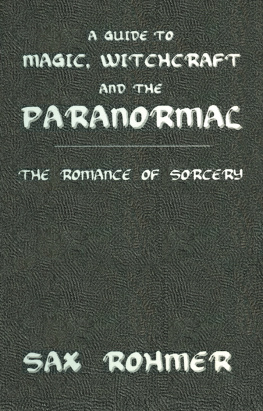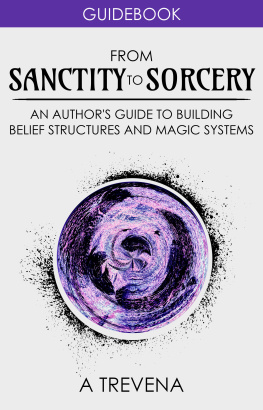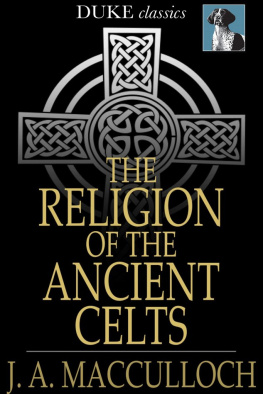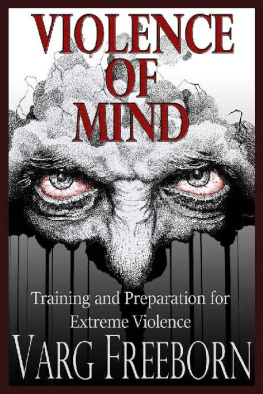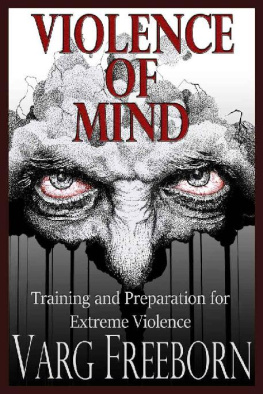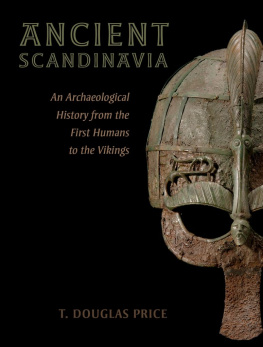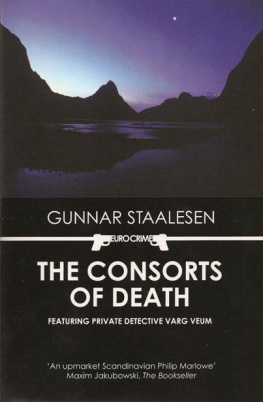Vikernes, Varg - Varg Vikernes - Sorcery and Religion in Ancient Scandinavia
Here you can read online Vikernes, Varg - Varg Vikernes - Sorcery and Religion in Ancient Scandinavia full text of the book (entire story) in english for free. Download pdf and epub, get meaning, cover and reviews about this ebook. genre: History. Description of the work, (preface) as well as reviews are available. Best literature library LitArk.com created for fans of good reading and offers a wide selection of genres:
Romance novel
Science fiction
Adventure
Detective
Science
History
Home and family
Prose
Art
Politics
Computer
Non-fiction
Religion
Business
Children
Humor
Choose a favorite category and find really read worthwhile books. Enjoy immersion in the world of imagination, feel the emotions of the characters or learn something new for yourself, make an fascinating discovery.

Varg Vikernes - Sorcery and Religion in Ancient Scandinavia: summary, description and annotation
We offer to read an annotation, description, summary or preface (depends on what the author of the book "Varg Vikernes - Sorcery and Religion in Ancient Scandinavia" wrote himself). If you haven't found the necessary information about the book — write in the comments, we will try to find it.
Vikernes, Varg: author's other books
Who wrote Varg Vikernes - Sorcery and Religion in Ancient Scandinavia? Find out the surname, the name of the author of the book and a list of all author's works by series.
Varg Vikernes - Sorcery and Religion in Ancient Scandinavia — read online for free the complete book (whole text) full work
Below is the text of the book, divided by pages. System saving the place of the last page read, allows you to conveniently read the book "Varg Vikernes - Sorcery and Religion in Ancient Scandinavia" online for free, without having to search again every time where you left off. Put a bookmark, and you can go to the page where you finished reading at any time.
Font size:
Interval:
Bookmark:
Sorcery and Religion
in Ancient Scandinavia
By Varg Vikernes
Contents
Prologue
1.0 From the dim Mist of Antiquity
1.1 Animism
1.2 Sorcery
1.3 Religion
1.4 The Mistletoe
1.5 The Matriarchy
1.6 The Patriarchy
2.0 The Calendar Woman
2.1 The Sun's Calendar
2.2 The Mysteries
3.0 The Divine Secrets
3.1 The Runes
3.2 Freyr's Group of eight
3.3 Hagall's Group of eight
3.4 Tr's Group of eight
4.0 Vlusp
4.1 The Prophecy of the Sorceress
4.2 Freyr's First Group of eight
4.3 Hagall's First Group of eight
4.4 Tr's First Group of eight
4.5 Freyr's Second Group of eight
4.6 Hagall's Second Group of eight
4.7 Tr's Second Group of eight
4.8 Freyr's Third Group of eight
4.9 Hagall's Third Group of eight
4.10Tr's Third Group of eight
5.0 The Mystery Chamber
5.1 The Hiding Place of the Dead
6.0 The Voice of the Forefathers
6.1 The Eggjum Stone
6.2 varr Ellison
6.3 The Love of the Grave
Epilogue
Name Registry
Prologue
This book is written as an attempt to describe the traditions and beliefs of the Ancient Europeans. I have studied the subject for almost two decades and yet I can only list two books about this subject, The Golden Bough, by the anthropologist Sir James Frazer, and Fedrekult i Norge (Ancestral Cult in Norway), by the missionary and historian Otto Emil Birkeli, as any real help when writing this book. I have been forced to look for answers mainly in the etymology and original texts, but also in old fairy tales, traditional songs and Norwegian folklore.
My hypotheses in this book are based on the claim that all the tribes of Ancient Europe originally had the same religion, whether they lived in Europe or had emigrated to North-Africa or different parts of Asia. Even though the deities, myths and traditions discussed in this book generally speaking are Scandinavian, it does not mean they are only Scandinavian. I am describing common Ancient European beliefs.
I assume that the reader of this book is already familiar with the Scandinavian mythology, and will ask from you that you open your mind and accept that much of what you think you know already is in fact not correct. The common perception of Baldr and Bragi being two separate deities for example is wrong; they are just different names for the same deity. When you encounter such apparent mistakes made by me you need to accept them as correct, and keep reading until you realise that my interpretation is in fact correct. If you encounter a translation of a word or name that you think is wrong, or that your dictionary (or lecturer) claims is wrong, you need to do better research and find out what other dictionaries (and/or lecturers) have to say about this. They don't always agree. Also, remember that the Norse language was not a language with a clear orthography. What this means is that sometimes my translation may seem to be wrong, but can be seen as correct if you just change the spelling of the translated word. We know many names from different Norse sources, and these different sources use a different spelling; Nrfi is for example some times spelled Nrvi. I always use the translation that makes the most sense, although some times other translations are also possible and I often include all possible translations.
Academics tend to disregard every book written without references to specific sources. This book is probably such a book, but I have to defend it by saying that I cannot list sources when the ideas are my own, the interpretations my own and the conclusions my own. You only need an open mind and common sense to appreciate the contents of this book, and hopefully this means that a few academics as well might appreciate it.
The sorcery and religion in ancient Europe is the foundation on which our culture and civilisation was built. We see traces of this all around us, in everything we do, build and surround ourselves with, and not least in ourselves. It is about time that we realise and appreciate this.
The language in this book is my second language, so especially native English speakers will have to bear with me.
Varg Vikernes
November 2007
Troms, Norway
1.0 From the dim Mist of Antiquity
1.1 Animism
The Stone Age man was as intelligent as we are today, but he knew virtually nothing about the world in which he lived. Everything that took place around him, even the most trivial of things, was very frightening, or at best, incomprehensible. He did not know why the Sun rose and shone on the sky, why the Sun set and disappeared in the evening, or even what the Sun was. He did not know why the clouds appeared above him or why it started to rain. He did not know why or how women became pregnant, or why winter came. He did not have any understanding of time, of how long an hour, a day, a week, a month or a year lasted. Because of that he did not know for how long the Sun would be gone when it sat in the west, or for how long the winter would last.
The Sun was the most important entity to the Stone Age man. It gave him light so he could see well enough to gather food, along with the rain it was what made nature green and fertile, leaving an abundance of edible growths, and it gave warmth so he did not freeze to death. The periods when the Sun was gone or had lost its strength was therefore characterized by fear. What would happen to him? Would the Sun ever return and grow strong again? He did not know. He did not understand why the Sun was born in the east, why it flew across the sky and then sank into the ocean and died in the west. What could possibly make this shiny ball move across the sky? He could not see anything pulling or pushing the Sun, so obviously invisible forces in the air were responsible. The only known invisible force able to move other objects like that was the wind. It could grow so strong it would tear up entire trees from the ground and toss them about. It was certainly strong enough to move that bright ball up there in the sky as well!
The wind was closely related to the breath of man, which could also be used to move tiny objects, like feathers and leaves, around. It was therefore natural for the Stone Age man to assume that the wind was made up of spirits flying in the air, and that they controlled the movement of the Sun.
Note to the English version:
In the original Norwegian version of this book the similarity of the words breath (No. nde) and spirit (No. nd) is used to show where we have the idea of spirits from. I can add that the Latin spiritus also originally translates as breath, to make it clear that this is not a coincidence in the Norwegian language.
The spirits were invisible and powerful, and he assumed that they were responsible for all the incomprehensible forces of nature. They manipulated the rain from the clouds, thunder and lightning, nature's power of growth, and everything else. He realised or rather assumed that it was all associated with the spirits.
The next thing to do for him was to find out how he could influence the spirits, so that they gave him what he needed, first and foremost Sunlight, rain and fertility, when he wanted and needed it.
1.2 Sorcery
By studying nature the Stone Age man learnt that the lightning struck the trees and sometimes ignited them. Lightning was always followed by the thunder in the sky, and the fire was very similar to the Sun. It warmed them and lit up their surroundings just like the Sun did, even in the darkest winter nights. He therefore assumed that the fire had been transferred from Heaven to Earth and that it was stored inside the trees. The challenge was to extract the fire from the wood exactly at the moment when he needed it.
Next pageFont size:
Interval:
Bookmark:
Similar books «Varg Vikernes - Sorcery and Religion in Ancient Scandinavia»
Look at similar books to Varg Vikernes - Sorcery and Religion in Ancient Scandinavia. We have selected literature similar in name and meaning in the hope of providing readers with more options to find new, interesting, not yet read works.
Discussion, reviews of the book Varg Vikernes - Sorcery and Religion in Ancient Scandinavia and just readers' own opinions. Leave your comments, write what you think about the work, its meaning or the main characters. Specify what exactly you liked and what you didn't like, and why you think so.

